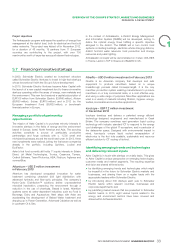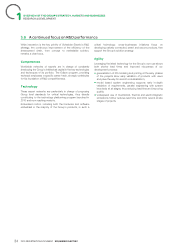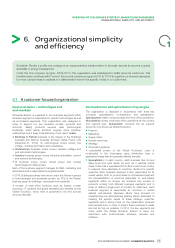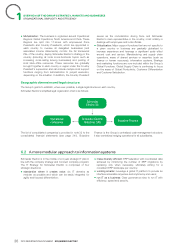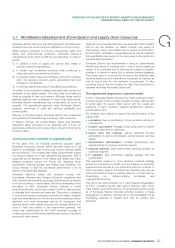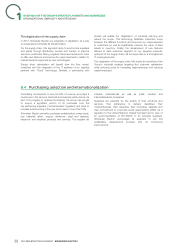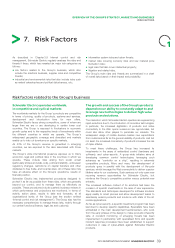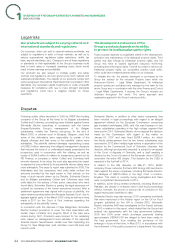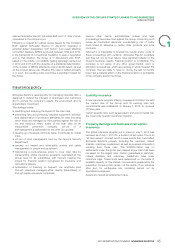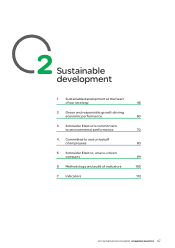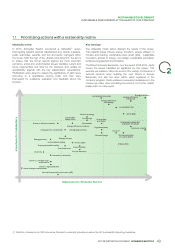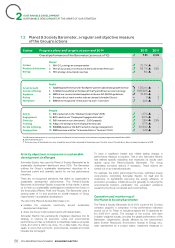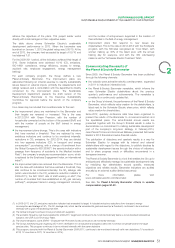APC 2013 Annual Report Download - page 44
Download and view the complete annual report
Please find page 44 of the 2013 APC annual report below. You can navigate through the pages in the report by either clicking on the pages listed below, or by using the keyword search tool below to find specific information within the annual report.
1OVERVIEW OF THE GROUP'S STRATEGY, MARKETS AND BUSINESSES
RISK FACTORS
Schneider Electric may also be exposed to the risk of claims for
or regulatory authorities could require the Group to conduct
breaches of environmental laws and regulations. Such claims
investigations and/or implement costly clean-up measures to deal
could adversely affect Schneider Electric’s financial position and
with the current or past contamination of current or former
reputation, despite the efforts and investments made to comply
production facilities or off-site waste disposal facilities, and to scale
at all times with all applicable environmental laws and regulations
back or temporarily or permanently close facilities in accordance
as they change.
with the applicable environmental laws and regulations.
If Schneider Electric fails to conduct its operations in compliance
with the applicable environmental laws and regulations, the judicial
Information systems risk
The Group operates, either directly or through service providers, a
out fully or partially in a number ofcountries since 2008, and is
wide range of highly complex information systems, including
continuing in France, Brazil the United States and other
servers, networks, applications and databases, that are essential
countries.
to the efficiency of our sales and manufacturing processes. Failure
In addition to the deployment of ERP systems, the Group is
of any of these hardware or software systems, a fulfillment failure
deploying various applications aimed at enhancing commercial
by a service provider, human error or computer viruses could
and supply chain efficiency.
adversely affect the quality of service offered by the Group.
In view of these projects’ complexity, extensive functionalities
The Group regularly examines alternative solutions to protect and their worldwide deployment, the Group has set up dedicated
against this type of risk and has developed contingency plans to governance and cost control structures to manage these issues
mitigate the effects of any information system failure. Dedicated and limit the related risks.
governance structures have been set up to manage relations However, despite the Group’s policy of establishing governance
with service providers responsible for outsourced IT systems structures and contingency plans, there can be no assurance
operations. that information systems projects will not be subject to technical
Problems may also be encountered during the deployment of problems and/or execution delays. While it is difficult to
new applications or software. In particular, in the last few years, accurately quantify the impact of any such problems or delays,
the Group has developed ERPs systems under SAP, which it they could have an adverse effect on inventory levels, service
started to roll out in2008. This roll-out process has been carried quality and, consequently, on our financial results.
Market risks
Interest rate risk The financial instruments used to hedge the exposure of the
Group to fluctuations in interest rates are described in note26 to
The Group is exposed to risks associated with the effect of the consolidated financial statements for the year ended
changing interest rates in different countries. Interest rate risk on December31, 2013.
borrowings is managed at the Group level, based on
The Group’s international operations expose it
consolidated debt and taking into consideration market
conditions in order to optimize overall borrowing costs. Most
to currency exchange risk
bond debt is fixed rate. At December31, 2013, 78% of the
Group’s gross debt was fixed rate.
Due to the fact that a significant proportion of transactions of
Maturities of financial liabilities are presented in note24.1 to the
Schneider Electric are denominated in currencies other than the
consolidated financial statements.
euro, the Group is exposed to currency risk. If the Group is not
A 1% increase in interest rates would have a positive impact of
able to hedge these risks, fluctuations in exchange rates between
around EUR36million on the Group’s net financial expense.
the euro and these currencies can have a significant impact on our
results and distort year-on-year performance comparisons.
42 2013 REGISTRATION DOCUMENT SCHNEIDER ELECTRIC



